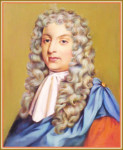▼
IU is hosting dozens of performances and exhibits throughout the summer ◆ by Hannah Waltz
This summer, the Indiana University Art Museum will host dozens of exhibits from artists all over the world as part of Bloomington’s 113 Days of Art. Among the not-to-be-missed events is a Midsummer Night on June 21st, an evening of art and live music to welcome in the official beginning of summer. From 7-9:30 p.m. guests can stroll through the three permanent collection galleries and gawk at night-themed art, including works by Picasso. Inspired by the wonders of the night, guests are encouraged to enjoy a drink on the Sculpture Terrace and listen to live music beneath the stars by The Dynamics, performing r&b, funk, and blues classics by artists such as Marvin Gaye, Stevie Wonder, and Parliament Funkadelic.
An evening of jazz is scheduled for July 26th, during which the museum will host the Urban Jazz Coalition, which will spotlight Diane Pelrine’s gallery talk about the important relationship between African textiles and American jazz, from 5:30-8:30 p.m. in the Raymond and Laura Wielgus Gallery of the Arts of Africa, the South Pacific, and the Americas.
The Kinsey Institute’s Annual Juried Art Show is one of the most anticipated exhibitions of Bloomington’s 113 Days of Art. The eighth annual show will be held in the Grunwald Gallery and runs through July 13th. The exhibit will show pieces of various mediums that investigate issues like sexuality, the politics of sex and gender, and romantic relationships among many more.
For Betsy Stirratt, the Grunwald Gallery director, the Kinsey Institute’s exhibition is at the top of her recommendation list. “The Kinsey Institute Juried Exhibit is always an interesting show,” Stirratt said. “It allows us to show a lot of great artists from all over the world and quality pieces.”
This show is a thought-provoking break from the societal norm. “It portrays sexuality in a way people don’t normally think about,” Stirratt said. “People tend to think of it as a certain type of show, like an erotic art show, but it really isn’t that. It’s not a typical perspective, and that’s really important.”
On July 19th the Grunwald Gallery will hold the opening reception for the Bloomington Photography Club Juried Exhibition from 6-8 p.m., which can be viewed through the 27th of July. “It’s our community show,” Stirratt said. “It’s an important contribution to the Bloomington community.”
The Lilly Library will also serve as a venue for this year’s 113 Days of Art, as it shows off its exhibition entitled “The Grolier Hundred,” which showcases one hundred of the most famous works of English literature. “It’s some of the most valuable books that we have in our collections,” said Rebecca Baumann, the reference associate at the Lilly. “There are lots of titles and authors that people will recognize as some of the high points of English literature.”
The exhibition was first opened over one hundred years ago in 1903 in New York City as one of the most significant rare book collections of the century. The Lilly Library in Bloomington became home to ninety-nine of the Grolier Hundred works in the mid 1950’s when J.K. Lilly, Jr. began gathering as many pieces from the collection as he could. The writings represent a wide range of literary genres, including history, law, science, fiction, poetry and drama.
One of the most prized pieces of the collection, Shakespeare’s First Folio, also known as Mr. William Shakespeare’s Comedies, Histories, and Tragedies, which was published in 1603, will also be on display. “If festival-goers are interested in great literature, this is a must-see,” Baumann said.
The Mathers Museum of World Cultures will host several exhibitions that will stimulate any viewer’s creative juices. Keeping those Indiana roots alive, the exhibit titled “The Day in Its Color: A Hoosier Photographer’s Journey Through Midcentury America” will showcase through June 23rd some of Indiana-native Charles Cushman’s 14,500 photographs. Other anticipated exhibits include “In the Kitchen Around the World,” which will display food-processing objects from different countries, “Time As We Keep It,” which explores the phenomenon that we call time, and “Footsteps of a Stranger: Shoes from cultures around the world,” among others.
Additionally, Folklorist and Director of Traditional Arts Indiana John Kay will give a lecture on “Southern Indiana Gravestones and Their Makers” on June 14th at noon in which Kay will speak about his research and Hoosier gravestones.
◆
Music
Don’t forget about the audible arts this summer at the Indiana University Musical Arts Center (MAC). Packed with performances by world-renown musicians, this season will offer an abundance of opportunities to bring music to your ears. Although nearly every week in June and July is full of concerts, a few notable performances should be noted. On Monday, July 8th at 7 p.m. William Harvey will deliver a lecture called “Teaching Music in Afghanistan.” Harvey is the Orchestra Director at the Afghanistan National Institute of Music (ANIM) where he also teaches violin and viola. After attaining degrees from both Julliard and Indiana University, Harvey founded the Afghan Youth Orchestra as well as Cultures in Harmony. The latter is a non-profit that advocates for cultural understanding through music. Harvey will speak in Sweeney Hall.
On Wednesday July 10th, the opening ceremony for the USA International Harp Competition will be held in Auer Hall, beginning at 4 p.m. Founded in 1989, the competition is held every three years in Bloomington. The finals will be held July 20th at 7 p.m. on the MAC Stage.
◆
Film & Theater
Film and theatrical arts in Bloomington are not hard to come by, especially during summer’s 113 Days of Art. The IU Cinema and the Indiana Festival Theatre will be hosting various films and live performances respectively from different genres and time periods. This year for the first time the Cinema will host the Slapsticon Film Festival from June 27-30th, a national comedy film festival that spotlights silent and early sound films with Chaplin, Keaton, and more. Other summer film showings include the 2013 film The Reluctant Fundamentalist about a Pakistani man and his post-9/11 struggles, screening May 24-26th, and Bayou Blue, a film that explores the “decay of a community” in Louisiana that screens with live music on May 30th at 7 p.m.
▲




